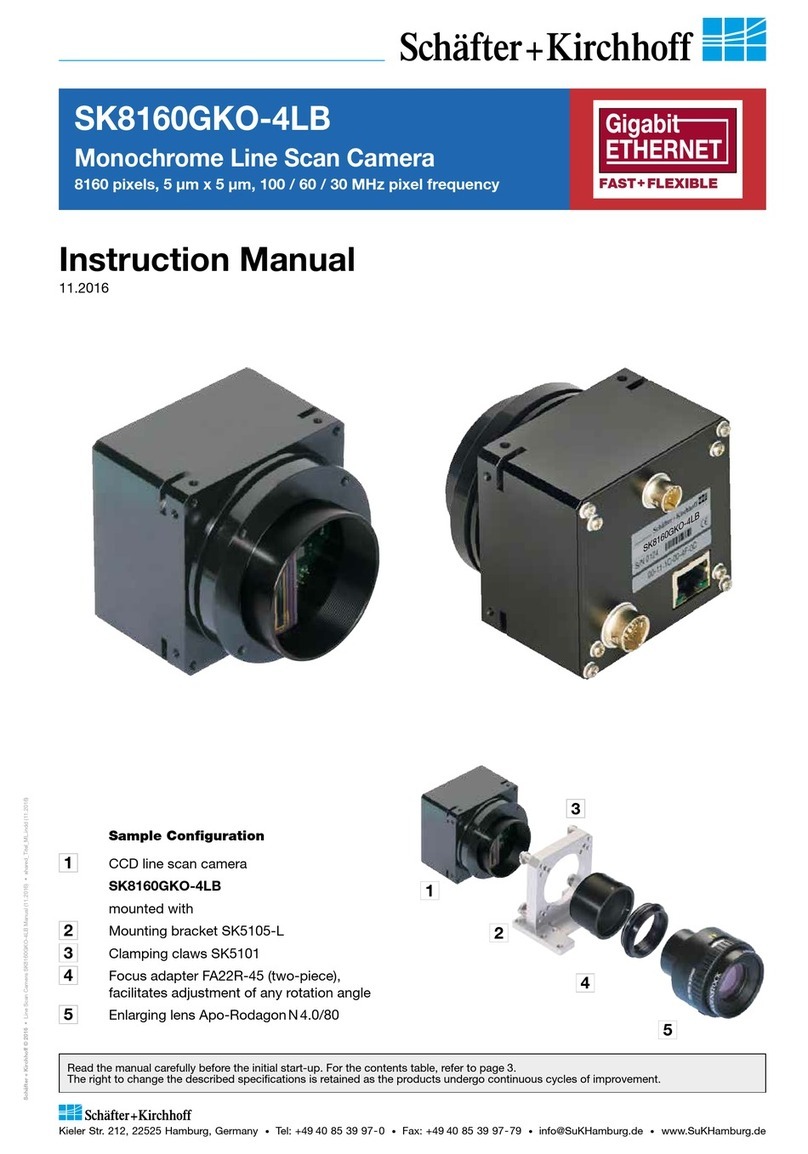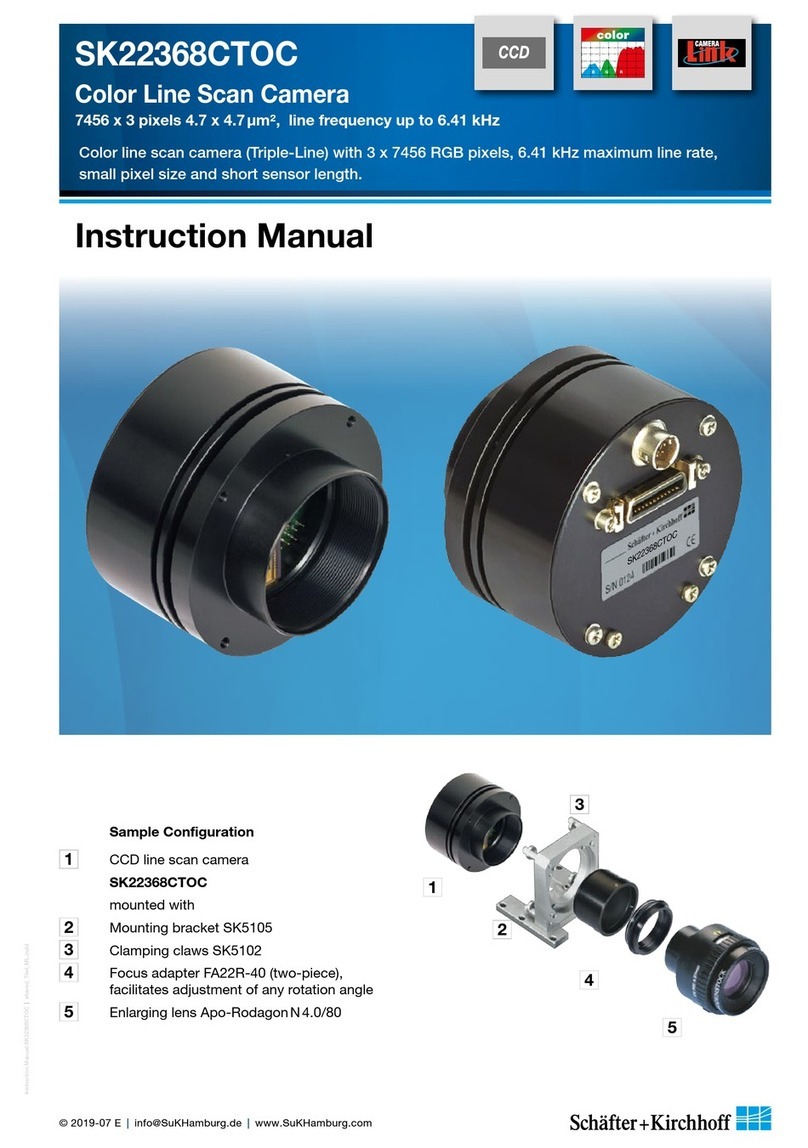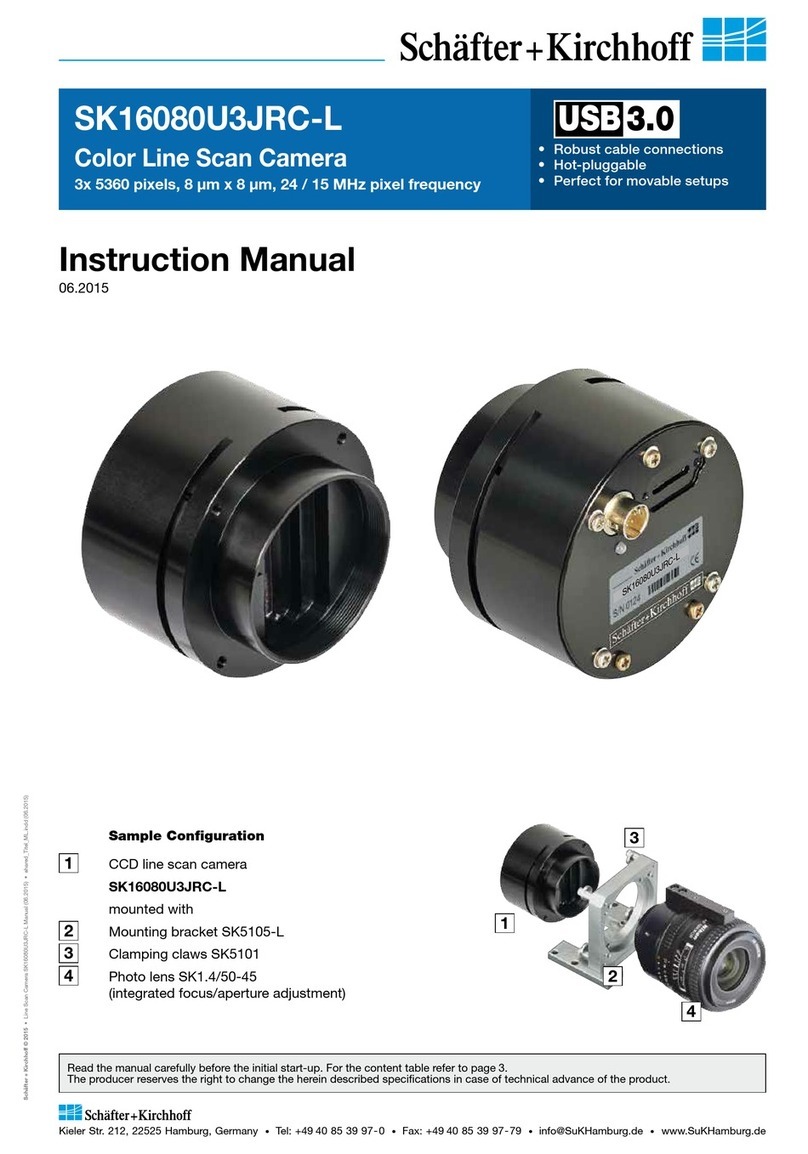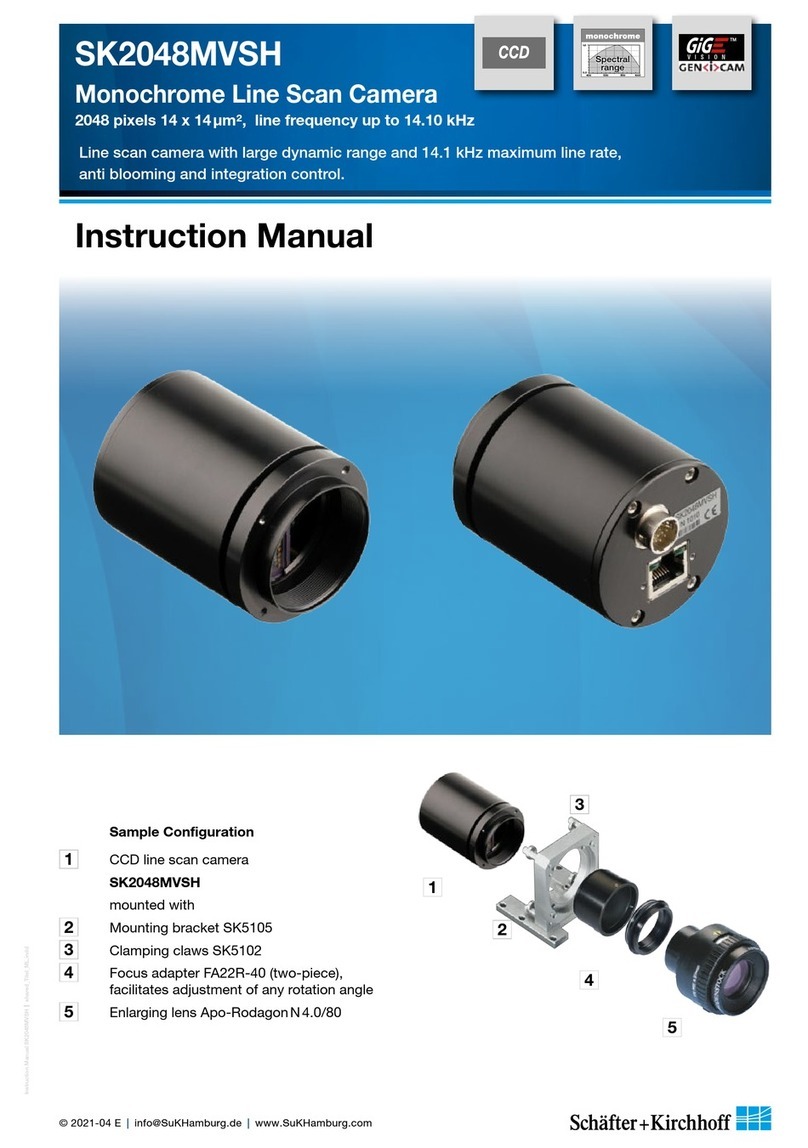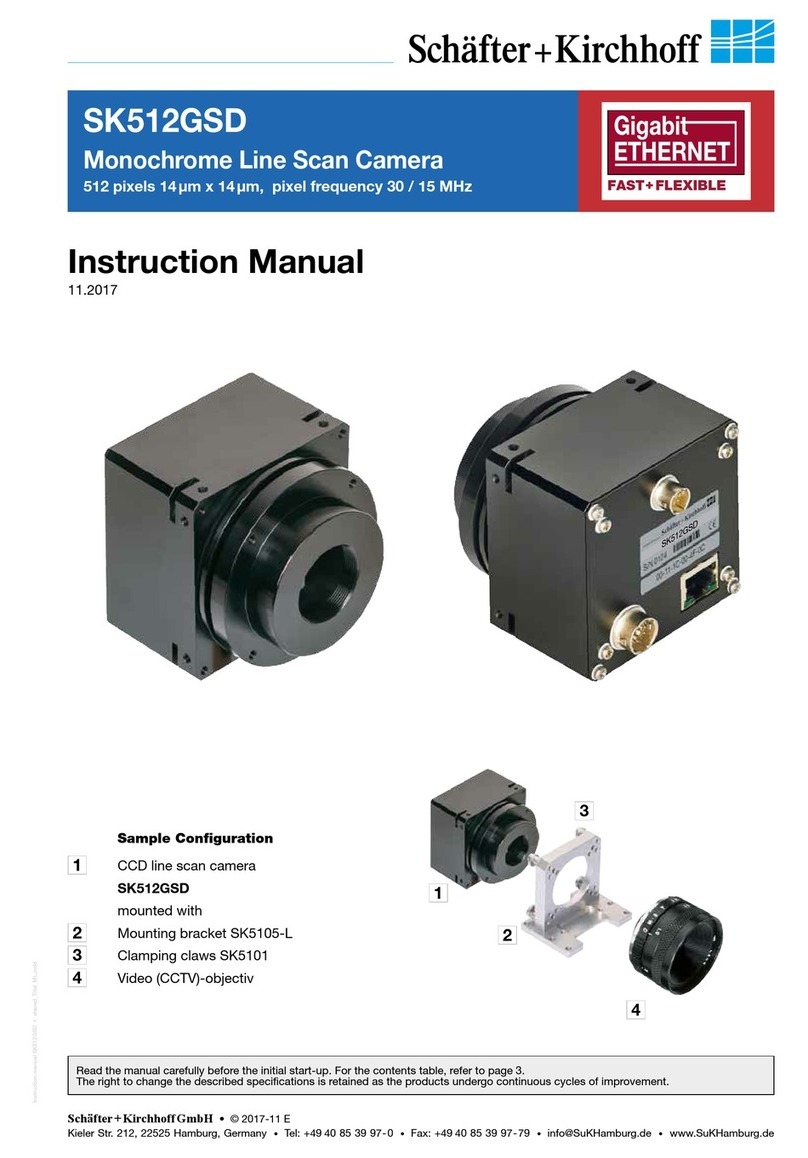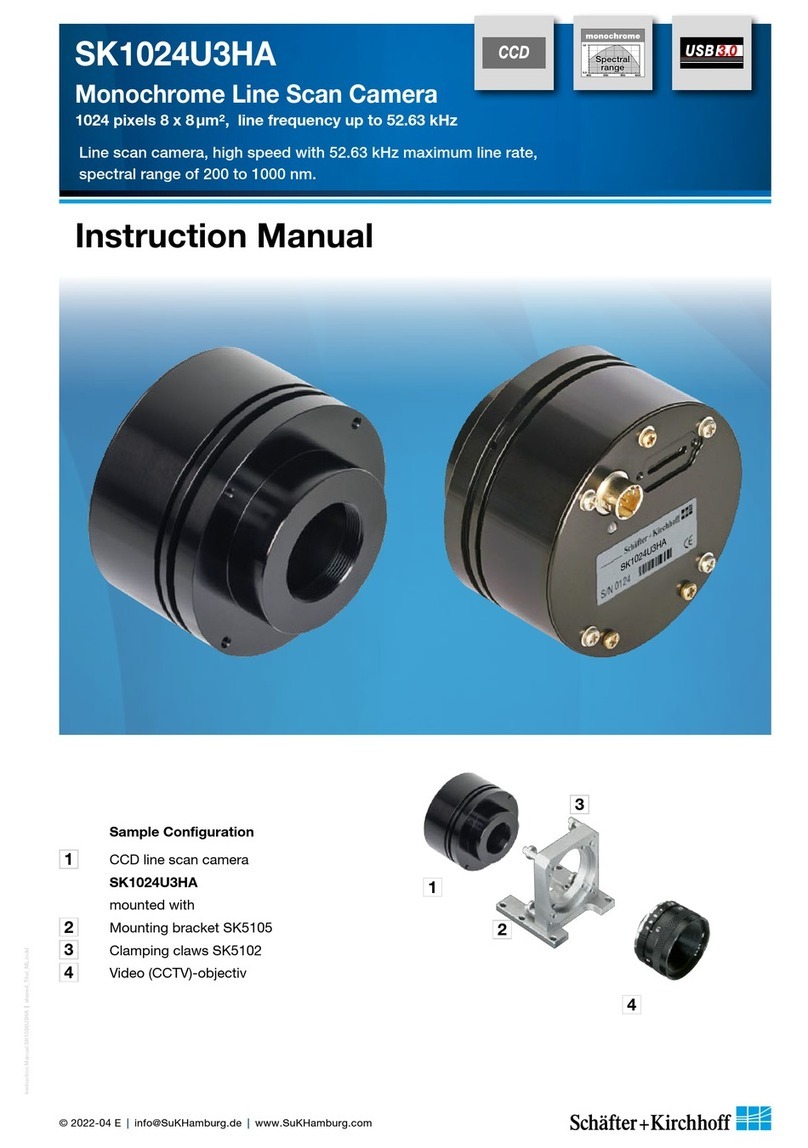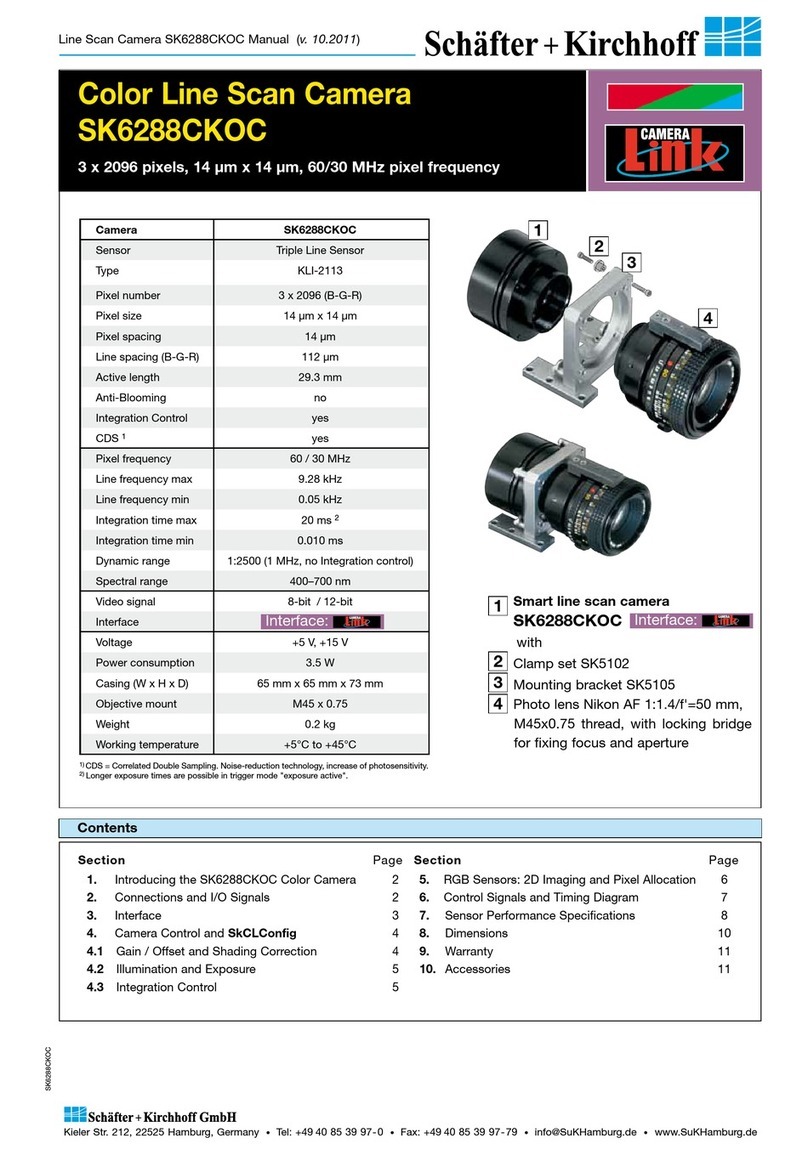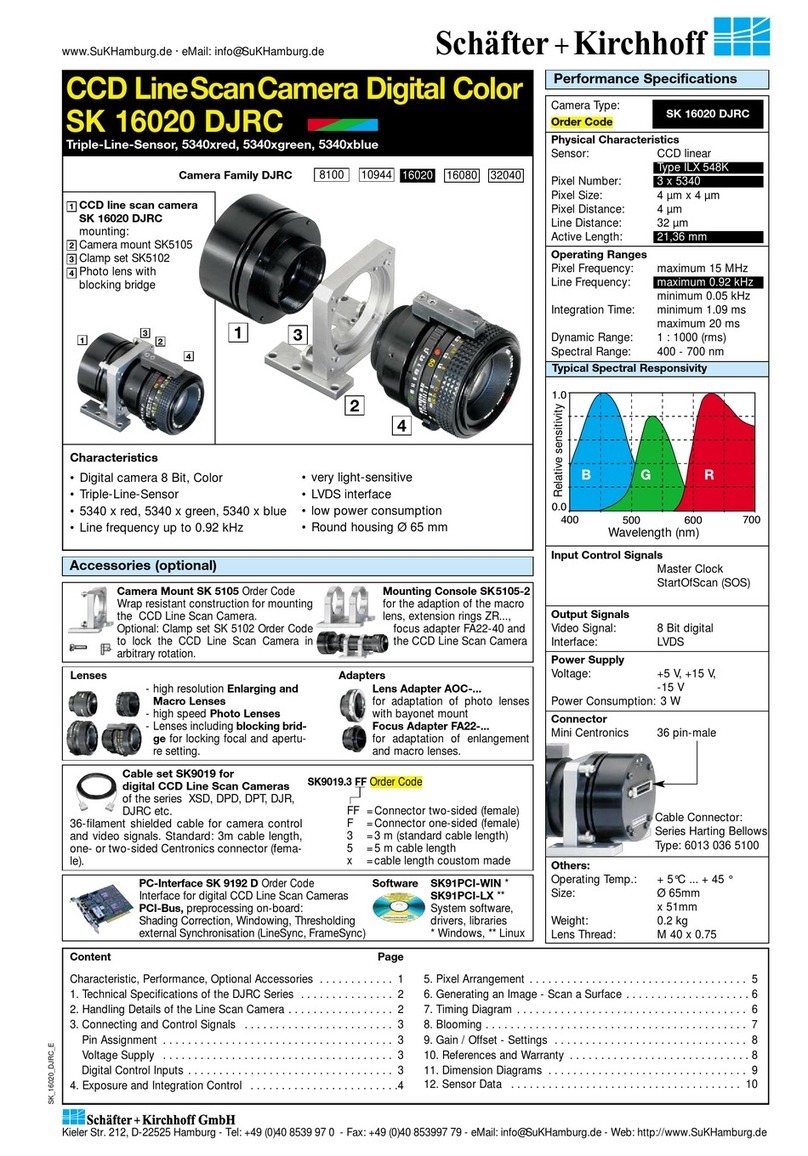
Page 10
Line Scan Camera SK2048USD Manual (v. 7.2012)
A charge-coupled device is a linear array
designed for moving discrete electrical
charges from one element of the array to
the next by successively applying a voltage
to each element in turn. The discrete charge
packets emanating from the end of the
linear array are converted into a voltage and
digitized for further transmission.
A line scan signal is produced by moving
the object to be imaged in a trajectory
perpendicular to the camera sensor.
By synchronizng data acquisition, high
frequencies and resolutions are achieved.
The choice of line scan camera is primarily
determined by the customer application
requirements, which influence sensor length,
pixel number and line scan frequency – see
Imaging Definitions, below.
Our considerable experience in line scan
camera design and software production
allows us to get the best possible imaging
performance within the constraints of the
technology. Potential problems are simply
designed out – or an intrinsic constraint is
tuned away – according to circumstance.
For example, illumination over-exposure of
the sensor causes blooming and signal blur
or loss, from charge leakage across pixels.
Blooming can be either designed out (anti-
blooming) or cut by reducing the integration
time or lens aperture.
Similarly, gain and offset tuning can increase
signal-to-noise ratios, while shading correction
negates any problems of pixel variability, lens
vignetting or inhomogeneous illumination,
whether initially present or not.
Other custom features can be chosen, such
as specialized or filtered illumination, choice
of color or monochrome line sensors as well
as type of interface, with either GigE VisionTM,
Gigabit Ethernet, LVDS, CameraLink® or USB
2.0 interfaces available for data output.
The oscilloscope display facility of the supplied
software is responsive in real-time, and the
zoom function can be used to highlight an
area of interest. The oscilloscope display is
ideally suited for parameterizing the camera,
for evaluating object illumination, for focussing
the image or for aligning the line scan camera
correctly – see Section 7.2 Alignments and
Adjustments.
A line scan camera 2D area scan can easily be
performed by simply specifying the number of
line scans to be integrated.
• Exposure Period and Integration Time
The illumination cycle of a line scan sensor, of
a particular length and number of pixels, for a
set period of time is designated the exposure
period.
Within a single exposure period, the
integration time is the duration designated for
signal accumulation of charges by the sensor.
In continuous mode, the next exposure cycle
is simply begun at the time of read-out of
the previous exposure and, so, the durations
of exposure period and integration time are
identical. Cameras with integration control
are capable of curtailing the integration time
within an exposure period (emulating a shutter
mechanism).
• Pixel and Line Scan Frequencies
The pixel frequency for an individual sensor
is the rate of charge transfer from pixel to pixel
and its ultimate conversion into a signal. The
minimum exposure period of a sensor is the
minimum time required for the read-out of
a whole line scan and is dependent on the
maximum pixel frequency and the number of
pixels (plus a sensor-dependent overhead of
passive pixels).
The line scan frequency is inversely
proportional to exposure period. During the
time the charges from a finished line scan
are read out, the next line scan is being
exposed. Thus, the minimum exposure period
determines the maximum line scan frequency.
• Optical Resolution
The optical resolution of a line scan camera is
determined primarily by the number of pixels in
the linear sensor and secondarily by their size
and spacing, the inter-pixel distance.
Currently available line scan cameras have up
to 12 000 pixels, ranging from 4 to 14 µm in
size and spacing, for sensors up to 56 mm in
length and line scan frequencies up to 83 kHz.
During a scanning run, the effective resolution
perpendicular to the line scan camera is
determined by the velocity of the scan and by
the line scan frequency, i.e. the number of line
scans per second.
Imaging Definitions
7. Line Scan Camera Fundamentals
7.1 Features and Characteristics
Pixel 1
CCD Sensor
Object
structure
GigE SK7500GTO
Line scan cameras from Schäfter+Kirchhoff are supplied factory-preset for the particular application, with optional accessories and appropriate
software – for parameterization of the camera or for optimizing signal acquisition. The advantages and constraints of the technology are described
below and some essential aspects of sensor alignment, lens focussing and signal optimization are presented.
• Region of Interest
A freely programmable window (region of
interest, ROI) can be applied to the line sensor
so that only the pixel information within the ROI
can reach the memory.
By only illuminating these ranges, data volume
and data processing is accelerated for both line
and area scan acquisitions.
Constraint: the ROI memory allocation must be
divisible by 8.
Data Reduction and Acquisition Acceleration
• Thresholding (B/W cameras only)
The thresholding process generates a binary
signal from the gray scale data, with values below
the threshold yielding 0 and those above yielding
1. Only the pixel addresses of the location and
threshold transition (from high→low or low→high)
are transmitted, reducing data throughput.
Thresholding is particularly appropriate for
measuring widths or edge positions, by simply
masking the required pixel addresses.
GigE SK7500GTF-XB



